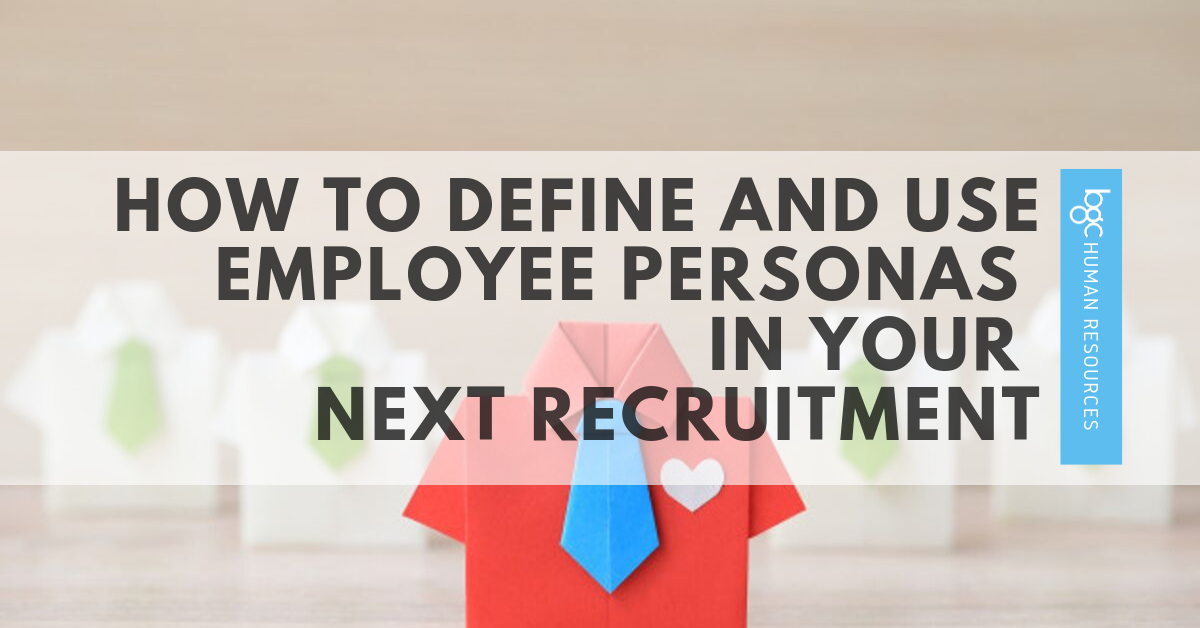Employee personas are slowly becoming a more popular tool amongst HR departments. Why?
Well, it is hard for a team of HR professionals, no matter how experienced, to judge the potential of the different CV and resumes that ends up on their table. Or deciphering if that Linkedin profile you’ve come across is the perfect match.
A bad hire is every HR’s worst nightmare. Not only are bad hires more expensive, but they can also cause a host of other problems such as; dampened morale, decreased teamwork, decreased productivity, and reputational damage.
Now that you’ve understood the importance of employee personas, here are some quick, easy steps to effectively create employee personas:
1. Pick out relevant employee data via your HR System

To build the different persona stories needed, you’ll need to first conduct intensive research. Persona stories cannot be crafted according to gut feel and intuition. If you’re unsure of where to start or begin, first observe your marketers or marketing teams. So, observe your marketing teams. Marketers are used to creating buyer persona and customer personas.
Here are some data that marketers often prioritize:
Demographic Information: Age, location, current job title, and income
Background: Educational, and professional work history
Qualifications: Educational, coursework, certifications, or preferred skills
Goals: Where do they see themselves in the next few years? What are their personal and career goals?
Of course, you can alter and edit this list according to the data you’ll need. Pay attention to the traits and characteristics of the different people your team needs. Alternatively, you can conduct an internal personality test amongst your employees to try and decipher which personality type fits the different teams (e.g. ENFP’s tend to do well in Marketing).
2. Conduct an internal personality stock take across departments
.png)
You might be familiar with the odd personality test. They’re often used by HR executives and hiring managers to determine if a candidate would be a good cultural fit for the organization. In fact, 78% of HR respondents identified personality as one of the most desirable quality in a worker. Personality tests such as the Myer-Briggs Type Indicator (MBTI) are often used to determine the right job position according to a candidate.
These tests can reveal all sorts of information about applicants such as:
The type of jobs and responsibilities they excel at - according to their MBTI type
Are they idealists, architects, or visionaries?
What type of work ethic do they have?
We’ve written some articles on the ideal jobs for all 16 MBTI types. Read about them below:
3. Conducting direct employee interviews to understand deeper
.png)
This could be a mini project to understand the different personality types and why they work well (or otherwise) together.
Alternatively, you can conduct face to face interviews to supplement the different trends you’ve found. Holding informal coffee interview sessions can also help you explore the different personalities or team in more detail. Since candidate personas should never be crafted according to gut feel, internal interviews will help you nail the head on your candidate persona stories.
5 Reasons Why HR Should Understand Employee Personas
There are numerous positives to crafting an employee persona. Here are some ways employee personas can be used:
1. Employee personas are the key to attracting ideal candidates
.png)
Job ads, titles and the allure of the company are nothing more than tools to help you cast a wide net to invite your ideal candidates. Without the idea of the perfect candidate, it is hard for your team to...well to find them. Now that you understand how they think and feel, you’ll be able to utilize this information in your job ads.
Changes you’ll be able to make include:
The tone and language of your job ads
Content that will catch the immediate attention of your ideal employee
The relevant company details to showcase in your job description and/or ads
Where do your ideal candidates congregate? Can they be found on Linkedin? Or do they use Instagram to showcase their portfolio?
The appropriate job portals to host your ads on (e.g. Cultjobs or Jobstreet)
2. It helps create a better employee experience
.png)
The main aim of creating an employee persona is to help create individualised journey maps for your candidates. An employee journey map allows companies to fully understand the pivotal moments that employees care about the most. Additionally, a journey map also helps current employees understand the requirements, skills, and KPI’s they’ll have to meet in order to advance to the next level.
3. It could help you identify organization wide changes required to grow productivity
.png)
Since different demographics are motivated by different incentives. You’ll soon discover the changes that your organization needs to make, in order to attract the right talent you are trying to target.
A good example would be the comparison between millennial and Generation Z employees. Millennial employees are motivated by the idea of work-life balance, whilst Gen Z employees prefer a flexible work schedule that allows them to work at their own time. Thus, you’ll need to restructure your employee benefits package to accommodate your desired target audience.
4. You're able to narrow down the talent pool to candidate with the right mindset and culture fit for your team

Mindset, not skillset is the name of the game. Whilst many candidates out there might receive the best training to perform the job well. Hiring someone with the right mindset will prove to be more beneficial in the long run. When you hire an employee who is curious and with the aptitude to learn, skillset becomes secondary. With the right mindset, an employee will be able to learn the proper skill sets needed and continue honing their skills throughout their stay.
5. It helps departments understand the diversity and talent gaps needed in their teams

Identifying the core characteristics that make up your organization’s ideal candidate will help speed up future hiring processes within the different departments. Not only that but clearly communicating who will thrive at the company - opens more doors for referrals from employees. Social media is everything these days, and organizations have taken to sites such as Instagram and Facebook to showcase their company culture. Another tool to help both your team and organization to source for the right fit.
Do you have any questions about employee personas? Let us know in the comments section below!
Recommended Readings:
The Kids Are Not Alright: Why Millennial Employees Lose Their Motivation
BGC Group's Declassified HR Guide to Navigating Office Romances
Last updated by BGC Group on 11 January 2021.
